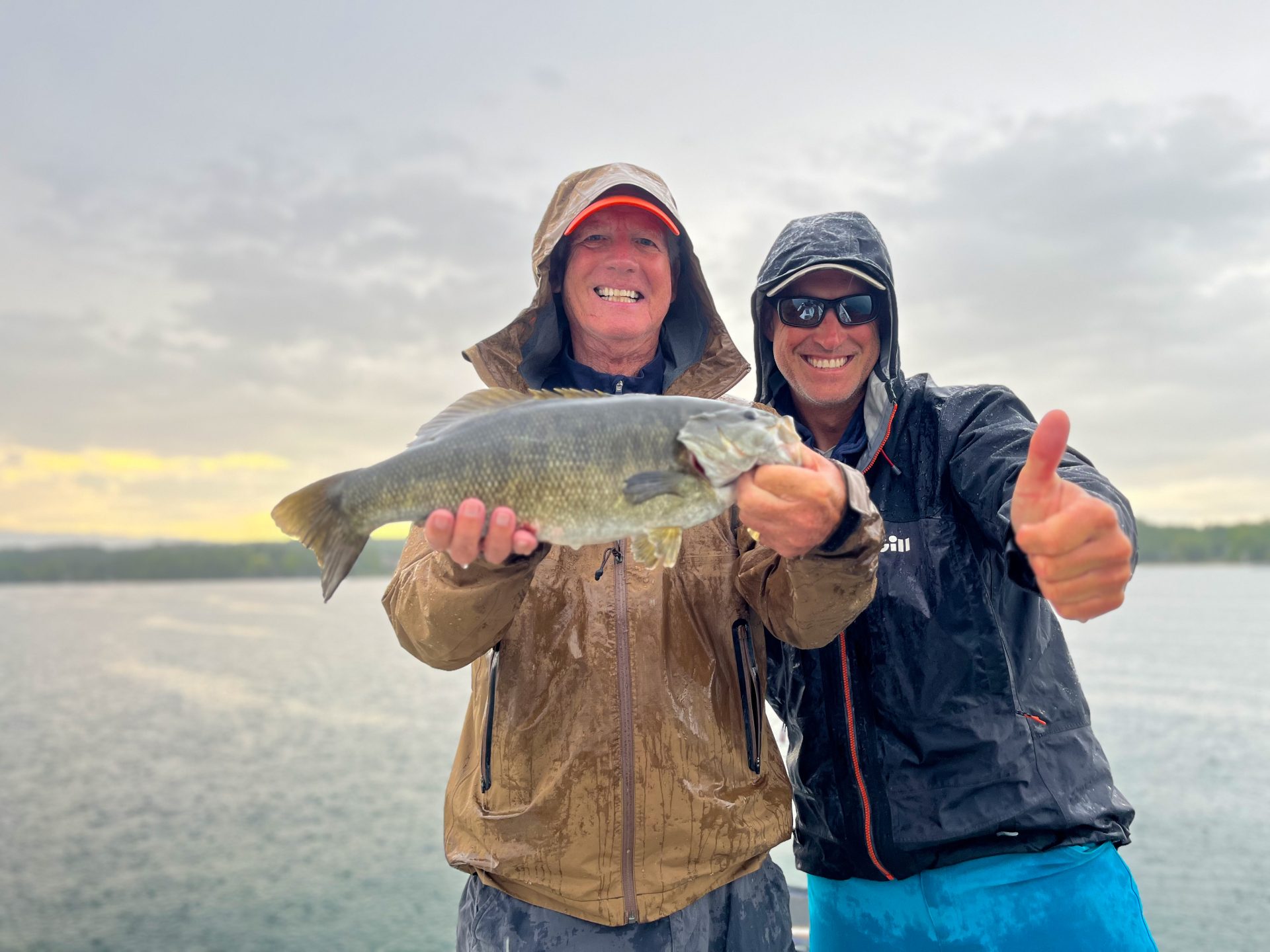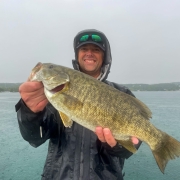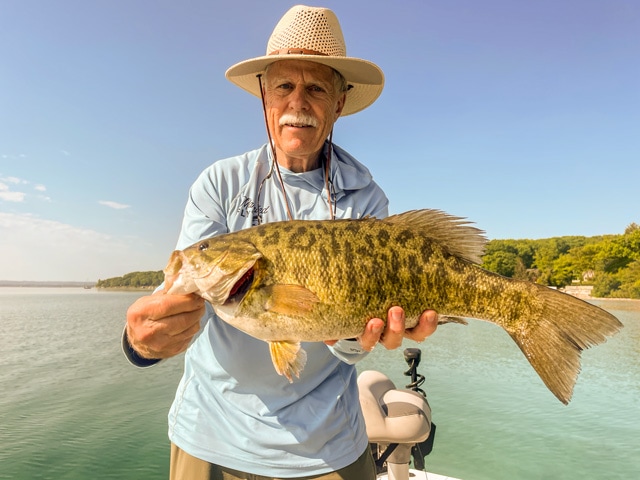Northern Michigan Smallmouth Bass
Smallmouth Bass

Smallmouth bass fishing on Grand Traverse Bay the past month has been solid. I have had the opportunity to learn a lot about the post spawn habits of these bass. Which has been great. This opportunity to target post spawn smallmouth in what I would consider shallow water, has been a great experience. Water temps still remain in the area I have been working in the upper 60’s to low 70’s. These bass on eager to put back on the weight from the riggers of spawning.
A good population of 3-4 pound smallmouth are hunting and looking for food. August normally brings on the deep water program, as 70 degree water takes them deep. So I’m going to miss the shallow rock program of July, but oh man have we learned something for years to come. Booking trips for next July if you coming back to the TC area, give us a call.
Smallmouth Tactics Post Spawn
As I mentioned the last 10 days the crayfish molt was key to success. Fast sinking crayfish looking flies on Intermediate lines or Type 3 lines like the SA Sonar I23 were great to fish in the shallow rocks. Early in the morning finding smallmouth cruising shallow was pretty easy. As the sun got high and boat traffic increased then the deeper spots played better. On the gear sides when the wind was blowing tube jigs in the 2.5″-3.5″ range worked well colors that fired this week Green Pumpkin , Amber Purple, Dark Melon, and something Black based in the clouds.
A new fly that took off this week was Blanes Bugger Changer, get a hold of Schultz Outfitters and get yours now if you a smallmouth chaser. Especially on the lake scene. I have thoughts on a Youtube video about this fly and the tactics we used.
Booking a Smallmouth Trip
Interested in booking a Smallmouth Bass Trip or going for Lake Trout on light tackle, drop us a message via email, or text/call us directly 231-631-5701. We have open boats available this Summer if your want to fish for Northern Michigan Smallmouth Bass.
Jon Ray




